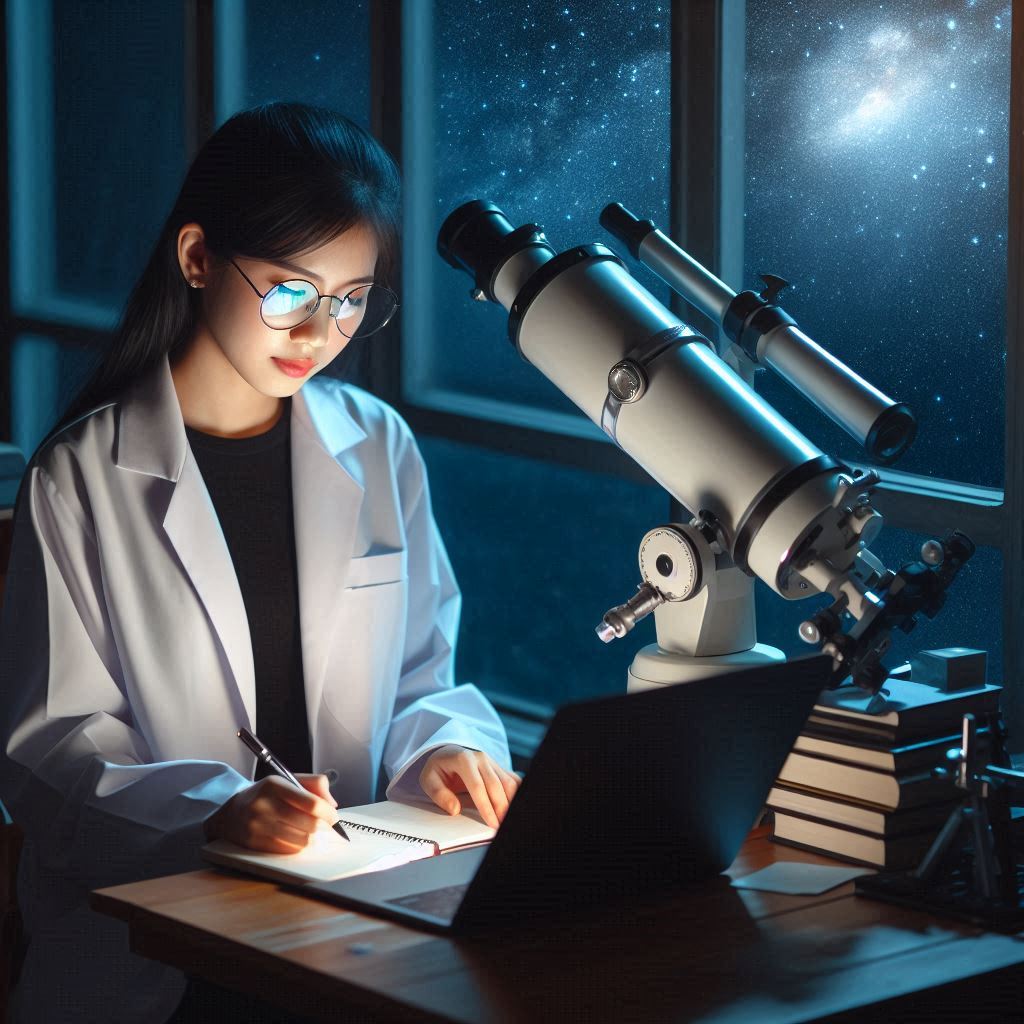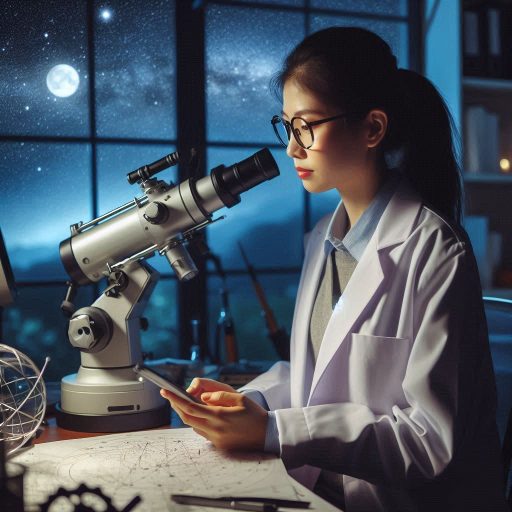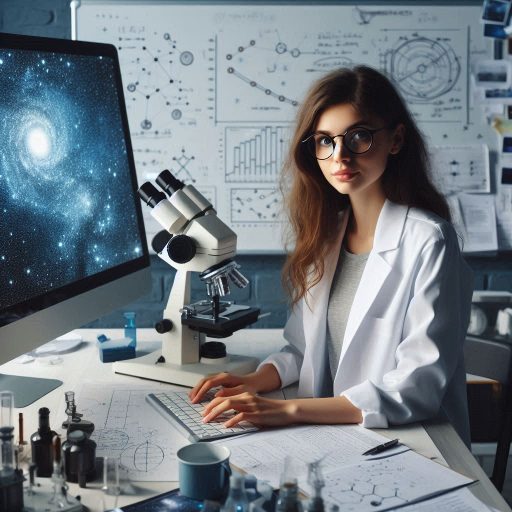Introduction
Planetary defense is crucial for protecting Earth from asteroid impacts.
Over the centuries, our planet has been hit by numerous space objects, sometimes with catastrophic consequences.
Modern technology now enables us to detect and potentially mitigate these threats before they can cause harm.
This task, known as planetary defense, is a global effort requiring the collaboration of multiple fields, including astronomy.
Astronomers play an essential role in planetary defense.
Their ability to detect, track, and study space objects makes them indispensable.
By identifying potential threats early, astronomers help scientists and governments take necessary action.
These experts utilize ground-based telescopes, space observatories, and other technologies to monitor asteroids and comets in our solar system.
This early detection is key to determining whether an object poses a risk and to initiating timely intervention strategies.
Planetary defense involves a multi-step process, beginning with detection.
Astronomers scan the skies for Near-Earth Objects (NEOs), which are asteroids or comets with orbits that bring them close to our planet.
Once identified, astronomers use precise measurements and calculations to predict their paths and determine the likelihood of collision with Earth.
The sooner these predictions are made, the more time humanity has to devise a plan to avert disaster.
This underscores why astronomers’ role in monitoring space is so important.
In addition to identifying and tracking NEOs, astronomers contribute to planetary defense by studying the characteristics of these objects.
Understanding the size, composition, and rotation of asteroids helps scientists determine the most effective strategies to deflect or destroy them.
For example, if an object is composed of loose rock, a different mitigation method may be needed than for a solid metallic asteroid.
The detailed data provided by astronomers guide these crucial decisions.
The Role of Astronomers in detecting Near-Earth Objects (NEOs)
How Astronomers Use Telescopes to Observe NEOs
Astronomers play a vital role in detecting Near-Earth Objects (NEOs).
They utilize powerful telescopes to survey the sky and identify these celestial bodies.
Their work involves constant monitoring of our solar system for potential threats.
By employing advanced imaging techniques, astronomers can spot NEOs, even those that are small and dim.
Telescopes like the Pan-STARRS and the Catalina Sky Survey focus on capturing images of the night sky.
These observatories operate around the clock, ensuring that no potential threat goes unnoticed.
Astronomers analyze the images to track moving objects.
They compare new images with previous ones to determine if an object is an NEO.
Importance of Early Detection in Mitigating Potential Threats
Early detection is crucial in planetary defense.
Identifying a NEO well in advance allows scientists to assess its trajectory and size.
With this information, they can estimate the potential impact risks.
If a significant threat arises, there is time to develop mitigation strategies.
This proactive approach can save lives and protect our planet.
In 2013, a small asteroid named Chelyabinsk entered Earth’s atmosphere.
It exploded over Russia, injuring over 1,600 people.
Unfortunately, astronomers did not detect it before the event.
This incident highlighted the need for improved detection systems and global cooperation.
Examples of Past NEO Sightings
Another notable case is the asteroid 99942 Apophis.
Initially discovered in 2004, it posed a potential threat to Earth.
Early observations predicted a possible impact in 2029.
Astronomers quickly gathered data and monitored its path.
Subsequent analyses confirmed that Apophis would safely pass by our planet.
This example underscores how early detection allows for accurate predictions and peace of mind.
In 2020, the NEO 2020 SO surprised astronomers when it turned out to be a spent rocket stage.
The discovery demonstrated the importance of continuous surveillance.
Astronomers utilized telescopes to clarify the object’s identity, preventing any misinterpretations.
In general, astronomers are our first line of defense against NEOs.
Their efforts in detection and monitoring are essential for planetary safety.
Through advanced technology and collaborative research, they work to protect Earth from potential threats.
By identifying NEOs early, they ensure we can take action when necessary.
The future of planetary defense relies heavily on the diligence of astronomers and their commitment to safeguarding our planet.
Read: Biology Ethics: Navigating Complex Issues in the US
Collaboration with space agencies
Collaboration Between Astronomers and Space Agencies Like NASA
Astronomers play a crucial role in collaborating with space agencies like NASA to ensure planetary defense.
Their observations and data are vital for tracking asteroids that pose potential threats to Earth.
Space agencies rely heavily on astronomers for precise measurements of asteroid size, shape, and trajectory.
By providing this data, astronomers help space agencies plan mitigation strategies for potentially dangerous objects.
How Astronomers Contribute Data to Space Agencies for Asteroid Tracking
One of the most critical tasks astronomers perform is monitoring near-Earth objects (NEOs).
They continuously scan the skies using ground-based and space telescopes to detect asteroids early.
Astronomers then relay this information to space agencies like NASA, which catalog and monitor these objects.
Accurate tracking helps predict whether an asteroid will pass close to Earth or pose a collision threat.
Astronomers also contribute to refining the data over time.
Initial asteroid observations often need more accuracy, requiring follow-up monitoring.
Astronomers gather additional information that helps space agencies improve their predictions and models.
This collaboration reduces uncertainty and enhances the ability to predict asteroid impacts with greater precision.
How This Collaboration Enhances Planetary Defense Efforts
Space agencies like NASA use astronomer-provided data in specialized tools like the Sentry system.
Sentry analyzes asteroid paths and calculates the likelihood of an Earth impact.
This collaboration allows space agencies to assess potential risks and make informed decisions about necessary actions.
Additionally, joint missions further strengthen these efforts.
For instance, missions like the Double Asteroid Redirection Test (DART) showcase the power of collaboration.
Astronomers help design such missions, ensuring they target the most critical threats effectively.
Through these combined efforts, astronomers and space agencies create a robust planetary defense network, safeguarding Earth from potential asteroid impacts.
Read: Continuous Learning: Post-graduate Options for US Biologists
Risk assessment and impact modeling
How astronomers assess the risk posed by NEOs
Astronomers assess the risk posed by Near-Earth Objects (NEOs) by actively tracking their movements in space.
Using powerful telescopes, they search for asteroids and comets that could come close to Earth.
Once detected, astronomers calculate the object’s orbit to determine if and when it will approach our planet.
This data is refined over time as more observations are made.
Early identification is crucial in determining the potential risk of an impact, enabling planetary defense systems to act accordingly.
The process begins with detailed observations from ground-based and space telescopes.
These tools capture images and measurements of NEOs, allowing astronomers to estimate their size, shape, speed, and trajectory.
By analyzing this information, they can predict how close the object will come to Earth.
Sophisticated software models these paths, accounting for gravitational influences and other variables that could alter the NEO‘s course.
Through this rigorous tracking process, astronomers provide the initial data necessary for understanding the threat posed by each NEO.
The process of impact modeling to predict the potential consequences of a celestial impact
Once astronomers have gathered data on a NEO, they use impact modeling to predict the consequences of a potential collision.
This modeling process involves simulating the NEO‘s impact on Earth, considering variables like size, speed, and angle of entry.
Astronomers work with planetary scientists and physicists to develop scenarios that estimate the effects of the impact on Earth‘s atmosphere, surface, and population.
These models help estimate the energy released upon impact, similar to predicting the effects of a large explosion.
Impact modeling also factors in secondary effects, such as tsunamis, shockwaves, and changes to the climate.
The goal of these models is to predict the scale of damage to provide governments and agencies with a clear understanding of the possible outcomes.
Accurate models ensure timely and effective mitigation strategies, should an impact become unavoidable.
The role of astronomers in providing crucial data for these models
Astronomers play a critical role in gathering the precise data needed for impact models.
They supply essential measurements on the NEO‘s size, speed, composition, and orbit, which are key to generating accurate simulations.
By refining the NEO’s predicted path over time, astronomers continuously update impact models to reflect the most current threat assessment.
This information is shared with organizations like NASA and international space agencies, who rely on astronomers’ data to inform planetary defense strategies.
Without astronomers’ expertise and detailed observations, modeling the risk and consequences of NEO impacts would be impossible.
Read: Essential Skills and Tools for Modern Chemists in America

Space missions for asteroid deflection
Identifying asteroids suitable for deflection missions
Astronomers utilize telescopes and other observational tools to track and monitor asteroids.
They analyze the trajectory and composition of asteroids to determine potential impact risks.
By studying light reflections and spectral data, astronomers can classify asteroids based on size and composition.
These classifications help in prioritizing which asteroids pose the greatest threat and require deflection efforts.
Process of asteroid deflection and the role of astronomers
Astronomers collaborate with space agencies to develop strategies for deflecting hazardous asteroids.
One common method is the kinetic impactor technique, where a spacecraft collides with an asteroid to change its trajectory.
Astronomers provide crucial data on the asteroid’s position, velocity, and composition to calculate impact strategies accurately.
They also assist in determining the optimal timing and angle for impact to achieve the desired deflection.
Examples of successful asteroid deflection missions
NASA’s Deep Impact mission successfully altered the trajectory of comet Tempel 1 using a kinetic impactor.
The European Space Agency’s Hera mission aims to study the results of NASA’s DART mission’s impact on asteroid Didymos.
Japan’s Hayabusa2 mission deployed a small explosive device on asteroid Ryugu to create a crater and study its composition.
These missions demonstrate the effectiveness of astronomers’ contributions in planning and executing asteroid deflection efforts.
Read: The Role of Chemists in US Environmental and Sustainability Efforts
See Related Content: Bioinformatics in Cancer Research: Key Contributions
Public outreach and education
One crucial role that astronomers play in planetary defense is raising public awareness about potential threats from near-Earth objects.
By utilizing their expertise and knowledge, astronomers can help educate the public about the importance of monitoring and tracking asteroids and comets that may pose a risk to our planet.
Highlighting the role of astronomers
- Astronomers are at the forefront of detecting and tracking near-Earth objects.
- They use telescopes and advanced technology to identify potential threats.
- Through their research, astronomers provide valuable data to organizations like NASA.
Educational programs and initiatives
- Many astronomers participate in educational programs aimed at engaging the public.
- These programs often include talks, workshops, and public events.
- Such initiatives help raise awareness and promote the importance of planetary defense.
Importance of public support
- Public support is crucial for funding research and resources for planetary defense.
- Without public awareness and backing, efforts to protect Earth from potential impacts may be hindered.
- By engaging the public through education and outreach, astronomers can garner support for planetary defense initiatives.
In short, astronomers play a vital role in raising public awareness and educating communities about the importance of planetary defense.
Through their efforts in outreach and education, astronomers can help ensure that we are prepared to respond to any potential threats from near-Earth objects.
Public support is key in providing the necessary funding and resources for these crucial efforts, and astronomers continue to advocate for greater awareness and support in this important area of research.
Transform Your Career Today
Unlock a personalized career strategy that drives real results. Get tailored advice and a roadmap designed just for you.
Start NowMonitoring potential threats
How astronomers continuously monitor known NEOs for any changes in trajectory or behavior
Astronomers play a crucial role in monitoring near-Earth objects (NEOs).
They continuously observe known NEOs to detect any changes in their trajectory or behavior.
Telescopes equipped with advanced imaging technology capture detailed data on these celestial bodies.
By tracking these objects over time, astronomers can identify even the slightest alterations in their orbits.
Regular monitoring helps astronomers analyze and document NEO behavior.
Even small shifts can lead to significant changes over time.
They utilize computer models to predict future paths based on current observations.
This predictive analysis is essential for assessing the risk levels associated with each NEO.
Importance of ongoing surveillance for early warning of potential impacts
The importance of ongoing surveillance cannot be overstated.
Early detection of a potential impact allows for timely action and planning.
Astronomers collaborate with various space agencies to share their findings.
This partnership enhances the effectiveness of global monitoring efforts.
By pooling resources and data, they create a comprehensive defense strategy.
Detecting potential threats early allows for the development of mitigation strategies.
Authorities can assess risks and prepare for potential consequences more effectively.
Without continuous monitoring, we may remain unaware of imminent dangers.
This makes ongoing surveillance a fundamental aspect of planetary defense.
The role of astronomers in providing real-time data to relevant agencies
In the event of a potential impact, astronomers provide real-time data to relevant agencies.
This information includes trajectory updates and possible impact locations.
Such data is critical for decision-making and response planning.
Authorities can act quickly, developing necessary protocols to ensure public safety.
This real-time communication strengthens the overall planetary defense framework.
Astronomers also participate in outreach programs to raise public awareness.
They emphasize the significance of monitoring NEOs and the potential risks involved.
By educating the public, they foster support for funding and resources.
Increased awareness can lead to greater investment in planetary defense initiatives.
Moreover, international cooperation among astronomers enhances monitoring efforts.
Global networks share data and observations to create a comprehensive picture of NEO activity.
This collaboration ensures no potential threat goes unnoticed.
By working together, astronomers can respond more swiftly to emerging risks.
Ultimately, monitoring potential threats is a shared responsibility.
Astronomers lead the charge in tracking NEOs, but collaboration is essential.
Together, they can ensure the safety of our planet.
Their vigilance and dedication contribute to our understanding of these celestial bodies.
Through ongoing observation and data sharing, astronomers strengthen humanity‘s ability to respond to potential impacts.
This commitment to planetary defense highlights the importance of astronomy in safeguarding our future.
Conclusion
Astronomers play a pivotal role in planetary defense, safeguarding Earth from potential cosmic threats.
Throughout history, they have been at the forefront of detecting asteroids, comets, and other near-Earth objects (NEOs) that could collide with our planet.
Their ability to monitor the sky and track these celestial bodies ensures that we stay alert to possible dangers.
By identifying and analyzing NEOs, astronomers help assess the likelihood of collisions.
This work is crucial because understanding the orbits and trajectories of these objects allows us to predict their behavior.
Their observations provide the data needed for governments and space agencies to take preventive measures if a potential impact is detected.
One key task of astronomers is to develop early warning systems.
These systems give us a critical head start in developing possible defense strategies.
Whether it’s altering an asteroid’s path or organizing evacuation plans, this early detection can save lives and reduce damage.
Astronomers continuously refine these systems, increasing our chances of successful intervention.
Beyond detection, astronomers collaborate with engineers, space agencies, and policymakers to design planetary defense strategies.
For instance, they work closely with NASA and ESA on missions like DART (Double Asteroid Redirection Test), which aims to alter an asteroid’s trajectory.
These missions demonstrate how important astronomers’ contributions are to both planning and executing defense strategies.
[E-Books for Sale]
The Big Book of 500 High-Paying Jobs in America: Unlock Your Earning Potential
$19.99 • 500 High-Paying Jobs • 330 pages
Explore 500 high-paying jobs in America and learn how to boost your career, earn more, and achieve success!
See All 500 High-Paying Jobs of this E-Book
1001 Professions Without a Degree: High-Paying American Jobs You Can Start Now
$19.99 • 1001 Professions Without a Degree • 174 pages
Discover 1001 high-paying jobs without a degree! Unlock career tips, skills, and success strategies for just $19.99!




